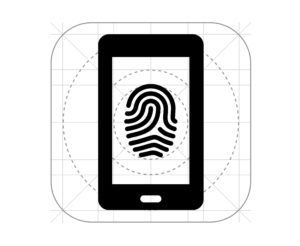September is Law Enforcement Biometrics Month and to kick things off on the right foot we’ve put together a primer to get you up to speed on the various deployments, innovations, and ongoing developments in the world of justice and identity.
– Sign up now for the Law Enforcement Biometrics Month Webinar –
And spread the news on Twitter: Tweet
The Growing Imporatnce of Biometric Law Enfrocement
According to Frost & Sullivan, the law enforcement biometrics market is on the rise. Valued at $838 million in 2014, the research firm predicted in the report “Enforcing the Law Using Biometrics,” that the market is on track to reach $1.1 billion in 2021. Driven by improvements in technology and increasing concerns about terrorism, biometric law enforcement solutions are becoming increasingly important in police operations on municipal, state, and national levels.
The following articles will provide more information on the Frost & Sullivan report, and give insight into how important biometrics are becoming in law enforcement.
Law Enforcement Biometrics Market on the Rise: Report
RCMP Scanner Malfunction Highlights Importance of Biometric Background Check Tech
Texas DPS Director Highlights Importance of Biometrics in Law Enforcement
How Biometrics Are Making a Difference In Law Enforcement
 In many ways, law enforcement deals directly with identity. Fundamentally, agents of the law exist to link a wanted person’s biographical and biological identity (who and what they are) with a specific detail of their contextual identity (what they did), and then proceed to dole out appropriate justice. Biometrics have the ability to link a real person to their criminal history more accurately than any other method, and as such are indispensable when it comes to police work, public safety, and crime prevention.
In many ways, law enforcement deals directly with identity. Fundamentally, agents of the law exist to link a wanted person’s biographical and biological identity (who and what they are) with a specific detail of their contextual identity (what they did), and then proceed to dole out appropriate justice. Biometrics have the ability to link a real person to their criminal history more accurately than any other method, and as such are indispensable when it comes to police work, public safety, and crime prevention.
Biometrics can be used to process and keep track of correctional facility inmates, or to quickly and effectively process arrests. Biometrics can identify persons of interest on camera, or aid in the forensics process, sometimes solving cases that have long gone cold. Biometrics can even provide fast and accurate criminal background checks on workers in the public trust—and thanks to new technologies like the FBI’s Rap Back program, modern biometric record checks remain up to date, notifying employers of any infractions after an employee’s hiring.
Biometric Tech Goes to Jail in Washington
Victoria Police Look to Biometrics to Stop Dangerous Drivers
ekin Patrol Police Vehicle Can Scan Plates, Speeds, and Faces
Morpho Revamps Victoria Police Biometric Capabilities
New CCTV Cameras Feature Built-In Facial Recognition Tech
RapidHIT DNA Identification a Hit with UK Police
Biometric Identification Leads to Breakthrough in Hawaii Cold Case
The Many Modalities of Biometric Law Enforcement
 While fingerprints are in many ways practically synonymous with forensics and law enforcement, biometrics and our featured vertical market go far beyond the cliches of detective fiction. Face recognition is an integral part of the FBI’s Next Generation Identification program, and is increasingly being integrated into CCTV system used by police to identify wanted persons on security feeds. Face recognition is even making its way into the courtroom, with a court in Brazil using finger and face biometrics to quickly and accurately identify individuals in the summary hearing process.
While fingerprints are in many ways practically synonymous with forensics and law enforcement, biometrics and our featured vertical market go far beyond the cliches of detective fiction. Face recognition is an integral part of the FBI’s Next Generation Identification program, and is increasingly being integrated into CCTV system used by police to identify wanted persons on security feeds. Face recognition is even making its way into the courtroom, with a court in Brazil using finger and face biometrics to quickly and accurately identify individuals in the summary hearing process.
Voice biometrics are being used in correctional facilities to better monitor inmate activity over prison and jail phone lines with an aim to cut down gang activity. Even Rapid DNA is finding a niche in law enforcement, perhaps predictably in the area of crime forensics. And of course, fingerprints still bear a great deal of the biometric weight in modern law enforcement, used for everything from background checks, to the police booking process, to criminal identification in the field and beyond.
The following headlines will give you a good idea of the different modalities at work in biometric law enforcement.
Biometric System Lets Investigators Search Inmate Calls for Specific Voices
Dutch Football Association Uses Mobile Biometrics to Fight Hooliganism
IACP: Crossmatch Announces Android App, Device Management Platform
Michigan County Police Adopt Mobile Fingerprint Scanning
Mato Grosso State Pilots Vision-Box Tech in the Courthouse
The World’s First FBI Appendix P Certified Palm Livescan Announced by Green Bit
Unisys Selected to Develop Netherlands Custody Management System
NEC Tech Aids in Cold Case Investigations
NetBio Rapid DNA System Gets FBI Approval
Controversy and Privacy
 Biometrics account for a powerful technological innovation and—at least in the eyes of the public— are relatively new. As biometric solutions are increasingly deployed by law enforcement agencies, privacy advocates and civil liberties groups are challenging some of the identity tech applications they deem potentially too invasive. Secret FBI projects shown to have databases of biometric data, government initiatives that conflict with privacy legislation, and the question of whether a court can compel subjects to unlock phones with their biometrics—these are a few of the topics that have sparked necessary, if heated, conversations and debates about privacy, biometrics, and public safety.
Biometrics account for a powerful technological innovation and—at least in the eyes of the public— are relatively new. As biometric solutions are increasingly deployed by law enforcement agencies, privacy advocates and civil liberties groups are challenging some of the identity tech applications they deem potentially too invasive. Secret FBI projects shown to have databases of biometric data, government initiatives that conflict with privacy legislation, and the question of whether a court can compel subjects to unlock phones with their biometrics—these are a few of the topics that have sparked necessary, if heated, conversations and debates about privacy, biometrics, and public safety.
Follow the links below to learn about some of the controversial topics in biometric law enforcement:
FBI ‘Pilot Project’ Has Collected 434,000 Iris Scans
FBI Moves to Exempt NGI System from Privacy Legislation
UK Report Sheds Light on Authorities’ Management of Biometric Evidence
Norwegian Police Can Compel Suspect To Unlock Fingerprint Smartphone
Police Seek Biometrics Researcher’s Help To Unlock Murder Victim’s Phone
Administrator Insists DMV Won’t Share Biometric Data with FBI
Uber and Lyft vs Criminal Background Checks
 One of the more prominent controversies in biometric law enforcement right now is the friction between rideshare companies, like Uber and Lyft, and public safety advocates demanding said companies instate mandatory fingerprint based criminal background checks for their drivers. Now that advances in biometric technology have made such checks affordable and quick—biometric background checks can be expedited to be completed in about 15 minutes—many believe there is no excuse for these next gen taxi services to be exempt from fingerprint-assured accountability. Read the stories below to get up to speed on the biometric conflict waging in the rideshare world:
One of the more prominent controversies in biometric law enforcement right now is the friction between rideshare companies, like Uber and Lyft, and public safety advocates demanding said companies instate mandatory fingerprint based criminal background checks for their drivers. Now that advances in biometric technology have made such checks affordable and quick—biometric background checks can be expedited to be completed in about 15 minutes—many believe there is no excuse for these next gen taxi services to be exempt from fingerprint-assured accountability. Read the stories below to get up to speed on the biometric conflict waging in the rideshare world:
Life Goes on in Austin After Uber, Lyft Departures
Uber, Lyft Resist Biometric Background Checks for Drivers
Uber, Lyft, Continue Fight Against Biometric Checks in New Jersey
Florida County Becomes New Front In Uber, Lyft’s Biometric Background Check Fight
Boston Police Commissioner Decries Lack of Fingerprinting for Uber, Lyft Drivers
IBIA Urges Uber and Lyft to Accept Biometric Background Checks for Drivers
Mobility and Connectivity In Law Enforcement
 Mobility and connectivity are stoking the fires of innovation and technological evolution on an industry-wide scale, and law enforcement is not separate from this wave of change. Specialty handhelds allow law enforcement officers to capture multiple biometrics in the field and match them against central criminal databases, some police even use smartphone enabled technology in the field for biometric powered identification procedures.
Mobility and connectivity are stoking the fires of innovation and technological evolution on an industry-wide scale, and law enforcement is not separate from this wave of change. Specialty handhelds allow law enforcement officers to capture multiple biometrics in the field and match them against central criminal databases, some police even use smartphone enabled technology in the field for biometric powered identification procedures.
As Internet of Things and wearable technology continues to grow in ubiquity, we are also seeing even more opportunities for biometrics to further proliferate in law enforcement. Connected squad cars that can scan crowds for persons of interest, body cameras with facial recognition, and other exciting innovations are all bringing biometrics into the modern era of hyper connectivity.
Here are some of the ways mobility has been having an effect on biometric law enforcement:
AMREL Receives FBI Certification For Biometric Handheld
Chinese Researchers Unveil Face-Scanning Police Vehicle
Biometrics and Mobility To Bolster NYPD Presence
FBI Contracts InCadence For Android-Based Biometric Software
Morpho Launches New Multimodal Handheld
There’s Major Opportunity For Biometric Wearables in Law Enforcement
FBI Contracts InCadence For Android-Based Biometric Software
Sacramento Police Expand Use of Mobile Facial Recognition
*
Stay posted to FindBiometrics throughout the month of September as we take a more indepth look at the world of law enforcement biometrics. Be sure to register in advance for our Law Enforcement Biometrics Month webinar, Connected Justice: The Challenges and Benefits of Biometric Law Enforcement.
Law Enforcement Biometrics Month is made possible by our sponsors Crossmatch and Green Bit



Follow Us